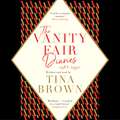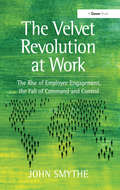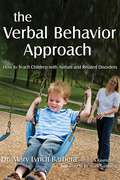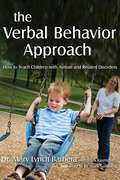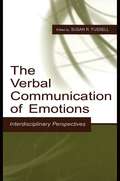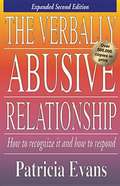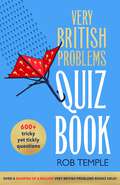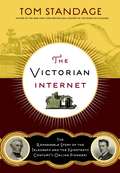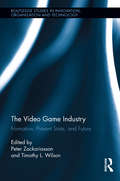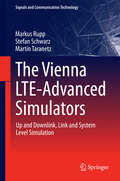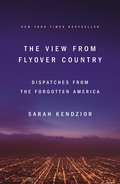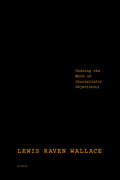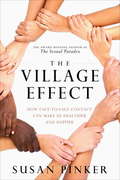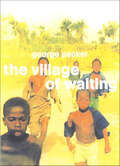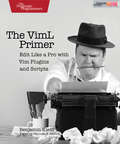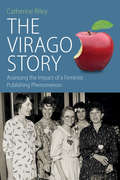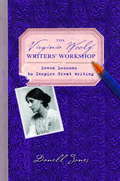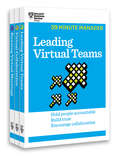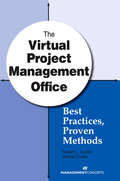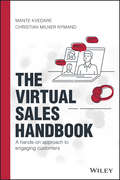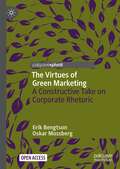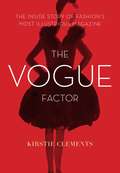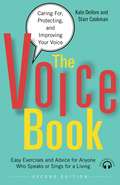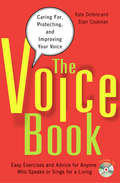- Table View
- List View
The Vanity Fair Diaries: 1983–1992
by Tina BrownTina Brown kept delicious daily diaries throughout her eight spectacular years as editor-in-chief of Vanity Fair. Today they provide an incendiary portrait of the flash and dash and power brokering of the Excessive Eighties in New York and Hollywood.'A fabulous odyssey ... I read it in a mad frenzy' Stephen Fry'Full of creative glee, passion and wild-ride excitement' Simon Schama'Hang on - it's a wild ride' Meryl StreepThe Vanity Fair Diaries is the story of an Englishwoman barely out of her twenties who arrives in New York City with a dream. Summoned from London in hopes that she can save Condé Nast's troubled new flagship Vanity Fair, Tina Brown is immediately plunged into the maelstrom of the competitive New York media world and the backstabbing rivalries at the court of the planet's slickest, most glamour-focused magazine company. She survives the politics, the intrigue and the attempts to derail her by a simple stratagem: succeeding. In the face of rampant skepticism, she triumphantly reinvents a failing magazine.Here are the inside stories of Vanity Fair scoops and covers that sold millions: the Reagan kiss, the meltdown of Princess Diana's marriage to Prince Charles, the sensational Annie Leibovitz cover of a gloriously pregnant, naked Demi Moore. In the diary's cinematic pages, the drama, comedy and struggle of running an 'it' magazine come to life. Brown's Vanity Fair Diaries is also a woman's journey, of making a home in a new country and of the deep bonds with her husband, their prematurely born son and their daughter.Astute, open-hearted, often riotously funny, Tina Brown's The Vanity Fair Diaries is a compulsively fascinating and intimate chronicle of a woman's life in a glittering era.(p) Macmillan US 2017 Written and Read by Tina Brown
The Velvet Revolution at Work: The Rise of Employee Engagement, the Fall of Command and Control
by John SmytheWhat drives or delivers engaged people? Employers need to focus on creating the right conditions. Employers can't impose engagement: people need to choose to engage themselves. In The Velvet Revolution at Work, the follow-up to his best-selling The CEO: Chief Engagement Officer, John Smythe explains that the essential ingredient of the right conditions is a culture of distributed leadership which enables people at work to liberate their creativity to deliver surprisingly good results for their institution and themselves. Using models, examples and anecdotes from his client research he goes on to demonstrate exactly how to design an engagement process; one that is integrated with your business strategy and that is sustainable.
The Verbal Behavior Approach: How to Teach Children with Autism and Related Disorders
by Mary Lynch Barbera Tracy RasmussenThe Verbal Behavior (VB) approach is a form of Applied Behavior Analysis (ABA), that is based on B.F. Skinner's analysis of verbal behavior and works particularly well with children with minimal or no speech abilities. In this book Dr. Mary Lynch Barbera draws on her own experiences as a Board Certified Behavior Analyst and also as a parent of a child with autism to explain VB and how to use it. This step-by-step guide provides an abundance of information about how to help children develop better language and speaking skills, and also explains how to teach non-vocal children to use sign language. An entire chapter focuses on ways to reduce problem behavior, and there is also useful information on teaching toileting and other important self-help skills, that would benefit any child. This book will enable parents and professionals unfamiliar with the principles of ABA and VB to get started immediately using the Verbal Behavior approach to teach children with autism and related disorders.
The Verbal Behavior Approach: How to Teach Children with Autism and Related Disorders
by Mary Lynch BarberaA step-by-step guide on how to help children develop language and speaking skills.The Verbal Behavior (VB) approach is a form of Applied Behavior Analysis (ABA), that is based on B.F. Skinner's analysis of verbal behavior and works particularly well with children with minimal or no speech abilities. In this book Dr. Mary Lynch Barbera draws on her own experiences as a Board Certified Behavior Analyst and also as a parent of a child with autism to explain VB and how to use it.This step-by-step guide provides an abundance of information about how to help children develop better language and speaking skills, and also explains how to teach non-vocal children to use sign language. An entire chapter focuses on ways to reduce problem behavior, and there is also useful information on teaching toileting and other important self-help skills, that would benefit any child.This book will enable parents and professionals unfamiliar with the principles of ABA and VB to get started immediately using the Verbal Behavior approach to teach children with autism and related disorders.(P)2017 Hodder & Stoughton Limited
The Verbal Communication of Emotions: Interdisciplinary Perspectives
by Susan R. FussellThis book pulls together new research and theory on the verbal communication of emotions by an international, cross-disciplinary group of recognized experts in affective communication. The book's goal is to provide readers with a comprehensive view of current research and encourage cross-disciplinary interaction. Topics include analyses of literal and figurative expressions for emotions, studies of the use of metaphor and other figurative expressions for emotion, analysis of the role of conversational partners in creating emotional meaning, and the effects of culture on emotional communication. The chapters are organized into three broad areas: background theory, figurative language use, and social/cultural aspects of emotional communication. Part I reviews fundamental issues in the verbal communication of emotion. Part II examines the role of metaphor and other figures of speech in emotional communication in both everyday language and psychotherapeutic contexts. Part III looks at ways emotions are embedded in larger socio-culture processes. Taken as a whole, the chapters provide a comprehensive look at the current state of research on the use of language in affective communication and suggest a number of interesting directions for future research.
The Verbally Abusive Relationship: How to Recognize It and How to Respond
by Patricia EvansVerbal abuse doesn't leave the same physical evidence as battery, but it can be just as painful, and can actually take longer to recover from. The new edition of this important reference covers the most recent developments in dealing with verbal abuse and answers the questions readers ask most on the subject.
The Very British Problems Quiz Book
by Rob TempleWhat does 'custard and jelly' mean in cockney rhyming slang?Which biscuit has half of its name on top of the cooker and the other half on the door?And 25 million of what drink are served by British Airways each year?We Brits can't get enough of a quiz. Stumped for office party chit-chat? Quiz. Midweek visit to the pub? Quiz. Stuck inside in pyjamas on a rainy night and in the mood to cause a big family argument? You got it - quiz.This book is correspondingly filled with questions on all things wonderfully and unequivocally British - you'll find all sorts of tickly teasers, complex conundrums, worrisome word searches and much more on topics ranging from our iconic weather to types of cake. Best enjoyed with a cup of tea and your favourite biscuit(s).***ANSWERS: Telly, Hobnob, buy the book and find out!***Praise for Very British Problems'Had us guffawing into our Earl Grey tea' Bella'My favourite twitter account at the moment is Very British Problems (@soverybritish) . . . it makes me laugh out loud' Tom Hiddleston'Hilarious' Daily Express'Temple pays affectionate and comic homage to the sheer quirkiness of being British' Good Book Guide
The Very British Problems Quiz Book
by Rob TempleWhat does 'custard and jelly' mean in cockney rhyming slang?Which biscuit has half of its name on top of the cooker and the other half on the door?And 25 million of what drink are served by British Airways each year?We Brits can't get enough of a quiz. Stumped for office party chit-chat? Quiz. Midweek visit to the pub? Quiz. Stuck inside in pyjamas on a rainy night and in the mood to cause a big family argument? You got it - quiz.This book is correspondingly filled with questions on all things wonderfully and unequivocally British - you'll find all sorts of tickly teasers, complex conundrums, worrisome word searches and much more on topics ranging from our iconic weather to types of cake. Best enjoyed with a cup of tea and your favourite biscuit(s).***ANSWERS: Telly, Hobnob, buy the book and find out!***Praise for Very British Problems'Had us guffawing into our Earl Grey tea' Bella'My favourite twitter account at the moment is Very British Problems (@soverybritish) . . . it makes me laugh out loud' Tom Hiddleston'Hilarious' Daily Express'Temple pays affectionate and comic homage to the sheer quirkiness of being British' Good Book Guide
The Victorian Internet: The Remarkable Story of the Telegraph and the Nineteenth Century's On-line Pioneers
by Tom Standagehe Victorian Internet tells the colorful story of the telegraph's creation and remarkable impact, and of the visionaries, oddballs, and eccentrics who pioneered it, from the eighteenth-century French scientist Jean-Antoine Nollet to Samuel F. B. Morse and Thomas Edison.
The Video Game Industry: Formation, Present State, and Future (Routledge Studies in Innovation, Organizations and Technology)
by Edited by Peter Zackariasson Timothy L. WilsonThe Video Game Industry provides a platform for the research on the video game industry to draw a coherent and informative picture of this industry. Previously this has been done sparsely through conference papers, research articles, and popular science books. Although the study of this industry is still stigmatized as frivolous and ‘only’ game oriented, those who grew up with video games are changing things, especially research agendas, the acceptance of studies, and their interpretation. This book describes and defines video games as their own special medium. They are not pinball from which they grew, nor movies which they sometimes resemble. They are a unique form of entertainment based on meaningful interactions between individuals and machine across a growing sector of the population. The Video Game Industry provides a reference foundation for individuals seriously interested in the industry at the academic level. As a result, this book will serve as a reference in curricula associated with video game development for years to come.
The Vienna LTE-Advanced Simulators
by Markus Rupp Stefan Schwarz Martin TaranetzThis book introducesthe Vienna Simulator Suite for 3rd-Generation Partnership Project(3GPP)-compatible Long Term Evolution-Advanced (LTE-A) simulators and presentsapplications to demonstrate their uses for describing, designing, and optimizingwireless cellular LTE-A networks. Part One addresses LTEand LTE-A link level techniques. As there has been high demand for the downlink(DL) simulator, it constitutes the central focus of the majority of thechapters. This part of the book reports on relevant highlights, includingsingle-user (SU), multi-user (MU) and single-input-single-output (SISO) as wellas multiple-input-multiple-output (MIMO) transmissions. Furthermore, itsummarizes the optimal pilot pattern for high-speed communications as well asdifferent synchronization issues. One chapter is devoted to experiments thatshow how the link level simulator can provide input to a testbed. This sectionalso uses measurements to present and validate fundamental results onorthogonal frequency division multiplexing (OFDM) transmissions that are notlimited to LTE-A. One chapter exclusively deals with the newest tool, theuplink (UL) link level simulator, and presents cutting-edge results. In turn, Part Twofocuses on system-level simulations. From early on, system-level simulations havebeen in high demand, as people are naturally seeking answers when scenarioswith numerous base stations and hundreds of users are investigated. This partnot only explains how mathematical abstraction can be employed to speed upsimulations by several hundred times without sacrificing precision, but alsoillustrates new theories on how to abstract large urban heterogeneous networkswith indoor small cells. It also reports on advanced applications such as trainand car transmissions to demonstrate the tools' capabilities.
The View from Flyover Country: Dispatches from the Forgotten America
by Sarah KendziorFrom the St. Louis–based journalist often credited with first predicting Donald Trump’s presidential victory."A collection of sharp-edged, humanistic pieces about the American heartland...Passionate pieces that repeatedly assail the inability of many to empathize and to humanize." — KirkusIn 2015, Sarah Kendzior collected the essays she reported for Al Jazeera and published them as The View from Flyover Country, which became an ebook bestseller and garnered praise from readers around the world. Now, The View from Flyover Country is being released in print with an updated introduction and epilogue that reflect on the ways that the Trump presidency was the certain result of the realities first captured in Kendzior’s essays.A clear-eyed account of the realities of life in America’s overlooked heartland, The View from Flyover Country is a piercing critique of the labor exploitation, race relations, gentrification, media bias, and other aspects of the post-employment economy that gave rise to a president who rules like an autocrat. The View from Flyover Country is necessary reading for anyone who believes that the only way for America to fix its problems is to first discuss them with honesty and compassion.“Please put everything aside and try to get ahold of Sarah Kendzior’s collected essays, The View from Flyover Country. I have rarely come across writing that is as urgent and beautifully expressed. What makes Kendzior’s writing so truly important is [that] it . . . documents where the problem lies, by somebody who lives there.”—The Wire“Sarah Kendzior is as harsh and tenacious a critic of the Trump administration as you’ll find. She isn’t some new kid on the political block or a controversy machine. . . .Rather she is a widely published journalist and anthropologist who has spent much of her life studying authoritarianism.” —Columbia Tribune
The View from Somewhere: Undoing the Myth of Journalistic Objectivity
by Lewis Raven Wallace#MeToo. #BlackLivesMatter. #NeverAgain. #WontBeErased. Though both the right- and left-wing media claim “objectivity” in their reporting of these and other contentious issues, the American public has become increasingly cynical about truth, fact, and reality. In The View from Somewhere, Lewis Raven Wallace dives deep into the history of “objectivity” in journalism and how its been used to gatekeep and silence marginalized writers as far back as Ida B. Wells. At its core, this is a book about fierce journalists who have pursued truth and transparency and sometimes been punished for it—not just by tyrannical governments but by journalistic institutions themselves. He highlights the stories of journalists who question “objectivity” with sensitivity and passion: Desmond Cole of the Toronto Star; New York Times reporter Linda Greenhouse; Pulitzer Prize-winner Rachel Kaadzi Ghansah; Peabody-winning podcaster John Biewen; Guardian correspondent Gary Younge; former Buzzfeed reporter Meredith Talusan; and many others. Wallace also shares his own experiences as a midwestern transgender journalist and activist who was fired from his job as a national reporter for public radio for speaking out against “objectivity” in coverage of Trump and white supremacy. With insightful steps through history, Wallace stresses that journalists have never been mere passive observers—the choices they make reflect worldviews tinted by race, class, gender, and geography. He upholds the centrality of facts and the necessary discipline of verification but argues against the long-held standard of “objective” media coverage that asks journalists to claim they are without bias. Using historical and contemporary examples—from lynching in the nineteenth century to transgender issues in the twenty-first—Wallace offers a definitive critique of “objectivity” as a catchall for accurate journalism. He calls for the dismissal of this damaging mythology in order to confront the realities of institutional power, racism, and other forms of oppression and exploitation in the news industry. Now more than ever, journalism that resists extractive, exploitive, and tokenistic practices toward marginalized people isn’t just important—it is essential. Combining Wallace’s intellectual and emotional journey with the wisdom of others’ experiences, The View from Somewhere is a compelling rallying cry against journalist neutrality and for the validity of news told from distinctly subjective voices.
The Village Effect
by Susan PinkerIn her surprising, entertaining and persuasive new book, award-winning author and psychologist Susan Pinker shows how face-to-face contact is crucial for learning, happiness, resilience and longevity. From birth to death, human beings are hard-wired to connect to other human beings. Face to face contact matters: tight bonds of friendship and love heal us, help children learn, extend our lives and make us happy. Looser in-person bonds matter, too, combining with our close relationships to form a personal "village" around us, one that exerts unique effects. And not just any social networks will do: we need the real, face-to-face, in-the-flesh encounters that tie human families, groups of friends and communities together. Marrying the findings of the new field of social neuroscience together with gripping human stories, Susan Pinker explores the impact of face-to-face contact from cradle to grave, from city to Sardinian mountain village, from classroom to workplace, from love to marriage to divorce. Her results are enlightening and enlivening, and they challenge our assumptions. Most of us have left the literal village behind, and don't want to give up our new technologies to go back there. But, as Pinker writes so compellingly, we need close social bonds and uninterrupted face-time with our friends and families in order to thrive--even to survive. Creating our own "village effect" can make us happier. It can also save our lives.From the Hardcover edition.
The Village of Waiting
by George PackerNow restored to print with a new Foreword by Philip Gourevitch and an Afterword by the author, The Village of Waiting is a frank, moving, and vivid account of contemporary life in West Africa. Stationed as a Peace Corps instructor in the village of Lavié (the name means "wait a little more") in tiny and underdeveloped Togo, George Packer reveals his own schooling at the hands of an unforgettable array of townspeople--peasants, chiefs, charlatans, children, market women, cripples, crazies, and those who, having lost or given up much of their traditional identity and fastened their hopes on "development," find themselves trapped between the familiar repetitions of rural life and the chafing monotony of waiting for change.
The VimL Primer: Edit Like a Pro with Vim Plugins and Scripts
by Benjamin KleinBuild on your editor's capabilities and tailor your editing experience with VimL, the powerful scripting language built into Vim. With VimL you can configure basic settings or add entirely new functionality. Use this quick and easy introduction to create your own Vim plugin while learning the concepts and syntax of VimL.VimL is the scripting language of the Vim editor. If you've ever edited or saved a vimrc file, you've written VimL. And VimL can do much more than simply configure settings and specify option values--you can write entire plugins in VimL. But without a background in scripting Vim, it can be hard to know where to start.The VimL Primer gives you the tools and confidence you need. It gets you comfortable in VimL quickly, walking you through creating a working plugin that you can run yourself as you write it in Vim. You'll learn how to script common commands and buffer interaction, work with windows and buffers from within a plugin script, and how to use autocommands to have Vim recognize entirely new filetypes. You'll discover how to declare filetype-specific settings and define your own syntax elements for use with Vim's syntax highlighting. And you'll see how you can write your own command-line commands and define new mappings to call them.With this introduction to scripting Vim, your own Vim extensions are only plugins away. Take control of your editor!What You Need::Vim version 7 or later is required, and it's available on any of the major operating systems. This book uses the "Huge" version of Vim 7.4.
The Virago Story: Assessing the Impact of a Feminist Publishing Phenomenon (Protest, Culture & Society #23)
by Catherine RileyThe 1970s witnessed a renaissance in women’s print culture, as feminist presses and bookshops sprang up in the wake of the second-wave women’s movement. At four decades’ remove from that heady era, however, the landscape looks dramatically different, with only one press from the period still active in contemporary publishing: Virago. This engaging history explains how, from modest beginnings, Virago managed to weather epochal transformations in gender politics, literary culture, and the book publishing business. Drawing on original interviews with many of the press's principal figures, it gives a compelling account of Virago’s place in recent women's history while also reflecting on the fraught relationship between activism and commerce.
The Virginia Woolf Writers' Workshop
by Danell JonesIn this brilliantly imagined book, author Danell Jones mines the diaries, essays, correspondence, and fiction of a literary legend to create an unforgettable master class in the art of writing. Using Virginia Woolf's own words, this inspiring, instructive, and entertaining guide will delight fans, students, and teachers alike--and at last give Woolf a classroom of her own. Imagine what it might be like if Virginia Woolf were teaching a writers' workshop. What would she say? What elements of her own experience would writers today find valuable? Now one need only to look within these pages to delight in her magic. For here, perched at the podium of a classroom, Woolf is ready to discuss the advice for writers that she scattered throughout her work. From nurturing ideas and dealing with self-doubt to creating a completed work and getting published, here is a wellspring of practical advice, invaluable insights on the creative life, and dozens of "writing sparks"-- exercises for writers of all levels-- inspired by Woolf's most well-known works. Take your seat in class as she shares her wisdom, wit, and expertise on a range of matters, including: *The value of experimentation*How to use a journal for inspiration*The importance of reading, walking, and practicing*Methods for learning from great writersAlso provided are recommendations for further reading as well as the original sources of all of Woolf's quotes For deeper exploration. Let Woolf's utterly unique vision guide you to your own distinct voice at the same time that you deepen your appreciation and knowledge of her as a revolutionary writer and thinker.From the Hardcover edition.
The Virtual Manager Collection (3 Books) (HBR 20-Minute Manager Series)
by Harvard Business ReviewToday we have greater control over where and when we work. As our businesses spread across the world and technology makes it easy to do our jobs from anywhere there's Wi-Fi, more of us have the option to go remote. But that doesn't mean we're good at it. Whether you're calling in from a home office every day or one of your team members occasionally logs in from the quiet car on a train, distance can make collaboration more difficult. Remote work gives teams flexibility and options, but when you're not face-to-face with colleagues, it's difficult to set and manage expectations, deal with inevitable tech glitches, keep your people (and yourself) motivated and engaged, and infuse warmth and personality into the blunt communication tools you're using.The Virtual Manager Collection gives you the solutions you need to be productive, whether you're managing a team, a project, or just your own work. This specially priced three-volume set includes Virtual Collaboration, Running Virtual Meetings, and Leading Virtual Teams.Tips and strategies cover: getting your technology up and running-and keeping it there building and maintaining relationships from afar communicating well through a variety of media running productive virtual meetings setting and managing expectations for your work leading geographically dispersed teamsThis set has the practical advice, insights, and tools you need to work well, no matter where you are.Don't have much time? Get up to speed fast on the most essential business skills with HBR's 20-Minute Manager series. Whether you need a crash course or a brief refresher, each book in the series is a concise, practical primer that will help you brush up on a key management topic. Advice you can quickly read and apply, for ambitious professionals and aspiring executives-from the most trusted source in business. Also available as an ebook.
The Virtual Project Management Office: Best Practices, Proven Methods
by Robert L. Gordon DM Wanda Curlee DM, PMP, PgMP, PMI-RMPSuccessfully Launch and Operate a Virtual Project Management OfficeNew technology and global businesses and organizations are making virtual project management offices (VPMOs) more important and more prevalent than ever. Successfully operating a VPMO requires project managers to employ additional skills and address different challenges from those necessary to operate a traditional PMO. For example, the virtual project manager must have effective soft skills to build trust among a dispersed team and to select the best forms of communication. He or she must also ensure compliance with the unique policies, procedures, and laws relevant to maintaining a VPMO.This book offers best practices for successful virtual projects and the most effective ways to create and implement a PMO in a virtual environment. It's a valuable resource for companies considering a VPMO and those already operating one.You'll find:- Proven implementation plans- Guidance for building a business case- Laws and ethics governing VPMOs- Tips and advice from expertsPlus! Dozens of practical tools to use in launching a VPMO or improving an existing project management office.
The Virtual Sales Handbook: A Hands-on Approach to Engaging Customers
by Mante Kvedare Christian Milner NymandLearn to engage your B2B customers through effective virtual sales meetings and presentations The global COVID-19 pandemic has radically changed how business-to-business companies interact with their customers. The traditional face-to-face meeting has quickly become a thing of the past—the virtual customer engagement model is the new normal. To secure existing and future revenue streams in the virtual B2B sales environment, companies must equip their commercial frontline with the confidence, skills, and tools necessary for effectively engaging customers virtually. The Virtual Sales Handbook: A Hands-on Approach to Engaging Customers is designed for sales reps, commercial managers, customer relationship managers, and other customer-facing professionals working in the virtual realm. Step-by-step, readers learn to prepare for a virtual sales meeting, create compelling virtual presentations, build energy through effective openers, develop trust in the virtual world, drive impact through virtual meeting follow-up, and much more. Throughout the book, readers are provided with an abundance of tips and tricks, illustrative examples and case studies, and actionable strategies based on extensive implementation and upskilling experience. Written by two authors with deep knowledge and expertise in operationalizing virtual commercial sales and marketing methods and tools, this must-have guide will help you: Navigate the world of virtual sales Overcome the barriers of virtual customer interaction Evaluate the strengths and weaknesses of different virtual sales models Plan and execute effective virtual sales meetings Build engaging storylines and presentations Lead the transformation from physical to virtual sales Leverage effective virtual customer engagement techniques The Virtual Sales Handbook: A Hands-on Approach to Engaging Customers is an indispensable resource for C-suite executives, business leaders, senior sales managers, sales representatives, account managers, and anyone on the commercial frontline.
The Virtues of Green Marketing: A Constructive Take on Corporate Rhetoric (Rhetoric, Politics and Society)
by Erik Bengtson Oskar MossbergThis open access book explores the idea that corporate rhetoric can be a force for good. In developing a new framework for analysis and discussion of green marketing, the authors argue that corporate environmental rhetoric can be harnessed to contribute to climate transition and a more sustainable market economy. The work explores the transformative power inherent in green promises and sets a vision of what green marketers should strive for. Engaging with selected research on organizational theory, the authors negotiate the conflicting paradigms of rhetorical theory and their relation to the study of corporate legitimation practices. The resulting theoretical framework provides an analytical scheme that can be useful in various disciplines – such as sociology, economics, law, marketing theory, and communication. It also illustrates how we can find new answers to contemporary challenges by re-imagining rhetoric.This is an open access book.
The Vogue Factor
by Kirstie ClementsThis addictive tell-all exposes the cutthroat culture of the world's most revered fashion masthead. Kirstie Clements started at the front desk answering phones for Vogue Australia. Years of hard work, risk-taking, and determination landed her at Editor-in-Chief. This is the story of her rise to the top. Of photo shoots in the jungles of Africa, clamoring for a spot at Fashion Week, celebrity interviews, deadlines, exotic travel, betrayals, and the danger inherent in the relentless pursuit of beauty. At once a career success story and a raw expose on the international fashion world, The Vogue Factor glitters with personality and is an unputdownable read for the fashion-obsessed - and anyone who wants to know what really happens at Vogue.
The Voice Book: Caring For, Protecting, and Improving Your Voice
by Starr Cookman Kate DeVoreMore than 30 million Americans rely on their voices for their jobs—from teachers, religious leaders, and entertainers to lawyers, executives, salespeople, and doctors. A controlled voice increases self-confidence and enhances charisma, approachability, and trustworthiness. Yet an astounding 30 percent of professionals develop preventable vocal problems that could ruin their careers. And most do not know that both the quality and tone of one's voice can be changed.The Voice Book: Caring For, Protecting, and Improving Your Voice is a one-of-a-kind reference that will save and improve your voice, your job, and your personal life. With dozens of vocal exercises and a detailed guide to the anatomy and physiology of voice, the book covers the full range of vocal health, from protecting against hoarseness and laryngitis to expanding speaking range and enhancing voice tone and quality. Illustrations, photographs, FAQs, and downloadable audio tracks make this updated edition of The Voice Book a must-read for anyone who wants a dependable, strong, and engaging voice.
The Voice Book: Caring For, Protecting, and Improving Your Voice
by Kate Devore Starr CookmanWritten to save careers one voice at a time through scientifically proven methods and advice, this resource teaches people how to protect and improve one of their most valuable assets: their speaking voice. Simple explanations of vocal anatomy and up-to-date instruction for vocal injury prevention are accompanied by illustrations, photographs, and FAQs. An audio CD of easy-to-follow vocal-strengthening exercises--including Hum and Chew, Puppy Dog Whimper, Sirens, Lip Trills, and Tongue Twisters--is also included, along with information on breathing basics, vocal-cord vibration, and working with students who have medical complications such as asthma, acid reflux, or anxiety.
